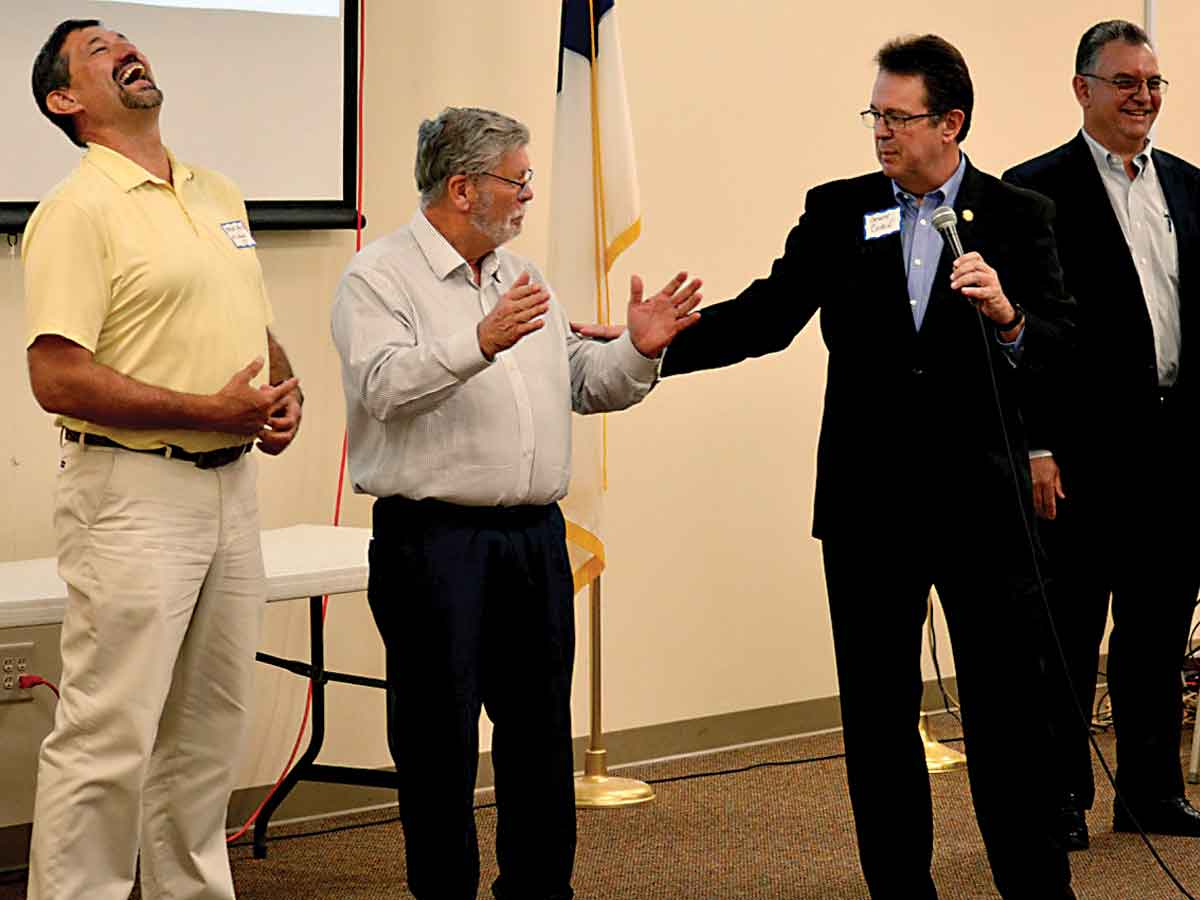Big money coming for rural broadband
 Western North Carolina’s entire legislative delegation (left to right) Mark Pless, Mike Clampitt, Kevin Corbin and Karl Gillespie - attended a broadband summit on March 21. Cory Vaillancourt photo
Western North Carolina’s entire legislative delegation (left to right) Mark Pless, Mike Clampitt, Kevin Corbin and Karl Gillespie - attended a broadband summit on March 21. Cory Vaillancourt photo
More than a hundred economic development professionals, elected officials, internet service providers and interested parties from across North Carolina’s seven westernmost counties met March 21 in Franklin to acquaint themselves with the ways in which unprecedented amounts of state and federal broadband monies will be used to close the digital divide in rural Appalachia.
“We in Western North Carolina, we’re the first people to have a meeting like this. No other district like ours has had a meeting like this,” said Sen. Kevin Corbin (R-Franklin), who represents Cherokee, Clay, Graham, Jackson, Macon, Haywood and Swain counties in the General Assembly.
It’s no coincidence that those counties have some of the worst internet connectivity and high-speed broadband availability rates in the state, and after years of work, Corbin and members of the House – Reps. Mike Clampitt, Karl Gillespie and Mark Pless joined Corbin at the meeting – are starting to make major progress.
Corbin’s GREAT (Growing Rural Economies with Access to Technology) grants, introduced with then-representative and current Labor Commissioner Josh Dobson, have helped bring service to some of the neediest areas in the region, $10 or $15 million at time over the past four years.
Now comes news that the state will inject almost $400 million into the program, $350 million of which comes from the American Rescue Plan Act, and $30 million of which comes from the state’s capital improvement fund.
Applications by internet service providers for portions of the grant funding are due April 4, and awards are expected hopefully sometime in June.
Related Items
Nate Denny, North Carolina’s deputy secretary for broadband and digital equity, spoke mostly on the GREAT grants but was joined by Angie Bailey, director of the broadband infrastructure office within the division of broadband and digital equity.
“The Completing Access to Broadband program, called ‘CAB,’ is our new program, and essentially that’s a partnership between the North Carolina Department of IT and each county that wishes to participate,” Bailey said.
The state and counties will work together mutually, Bailey said, to identify eligible areas and then create a joint RFP for providers to come in and build out infrastructure to underserved and unserved areas. There’s a required county match, but the state will provide project oversight. Right now, there’s $400 million budgeted for the CAB program.
The problem of internet access – highspeed, or not – was lain bare during the pandemic. Some adults couldn’t work, and some children couldn’t attend remote schooling or found themselves huddled outside businesses offering free wi-fi connections.
Graham County has the region’s highest rate of citizens with no internet access whatsoever, estimated at 36%.
“The counties that I represent are some of the most rural counties in North Carolina, but stand to gain the most from these dollars,” said Gillespie, who represents Cherokee, Clay, Graham and Macon counties. “You start with Graham County being the most rural and the least broadband. As you move east it gets a little better, but it’s still severe in Macon County. This is going to be huge.”
Only 5.3% of Graham County residents have access to high-speed internet, defined as 100 megabits upload and 20 megabits download speed.
Swain County is even worse; only 3% of residents have access to high-speed internet, and almost 34% have no internet access at all.
“This is a momentous occasion, that we’re going to have the working relationship of so many different groups – between the city, the county and the providers – to be able to bring internet hopefully to everybody in Swain County,” said Clampitt, who represents Swain, Jackson and a portion of Haywood County.
All told, the GREAT and CAB funding is only a portion of more than $1 billion appropriated; there’s another $90 million in “stopgap solutions” funding for difficult expansions, another $100 million to help internet service providers upgrade transmission poles, and another $1 million to help draw more accurate service maps.









